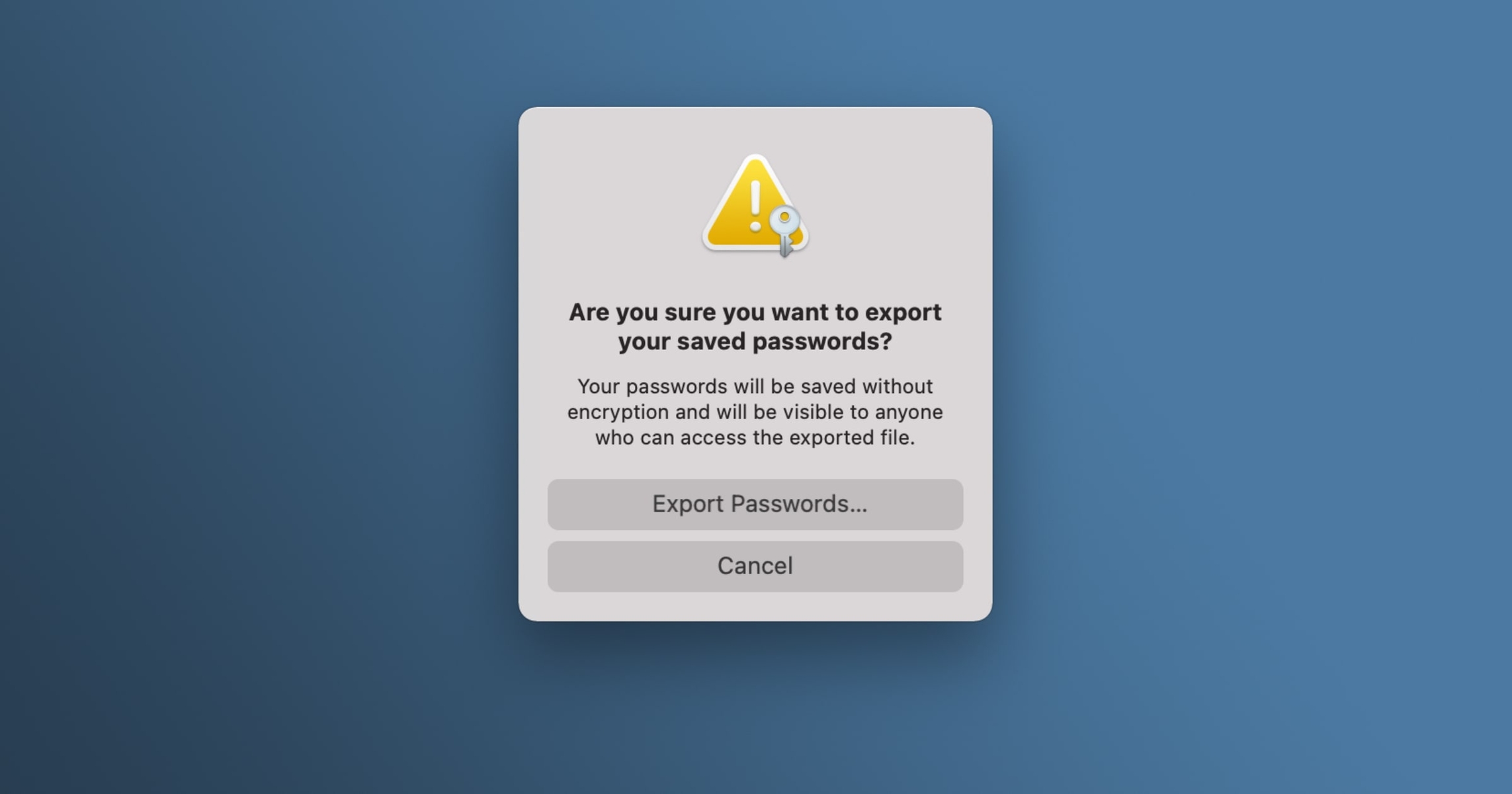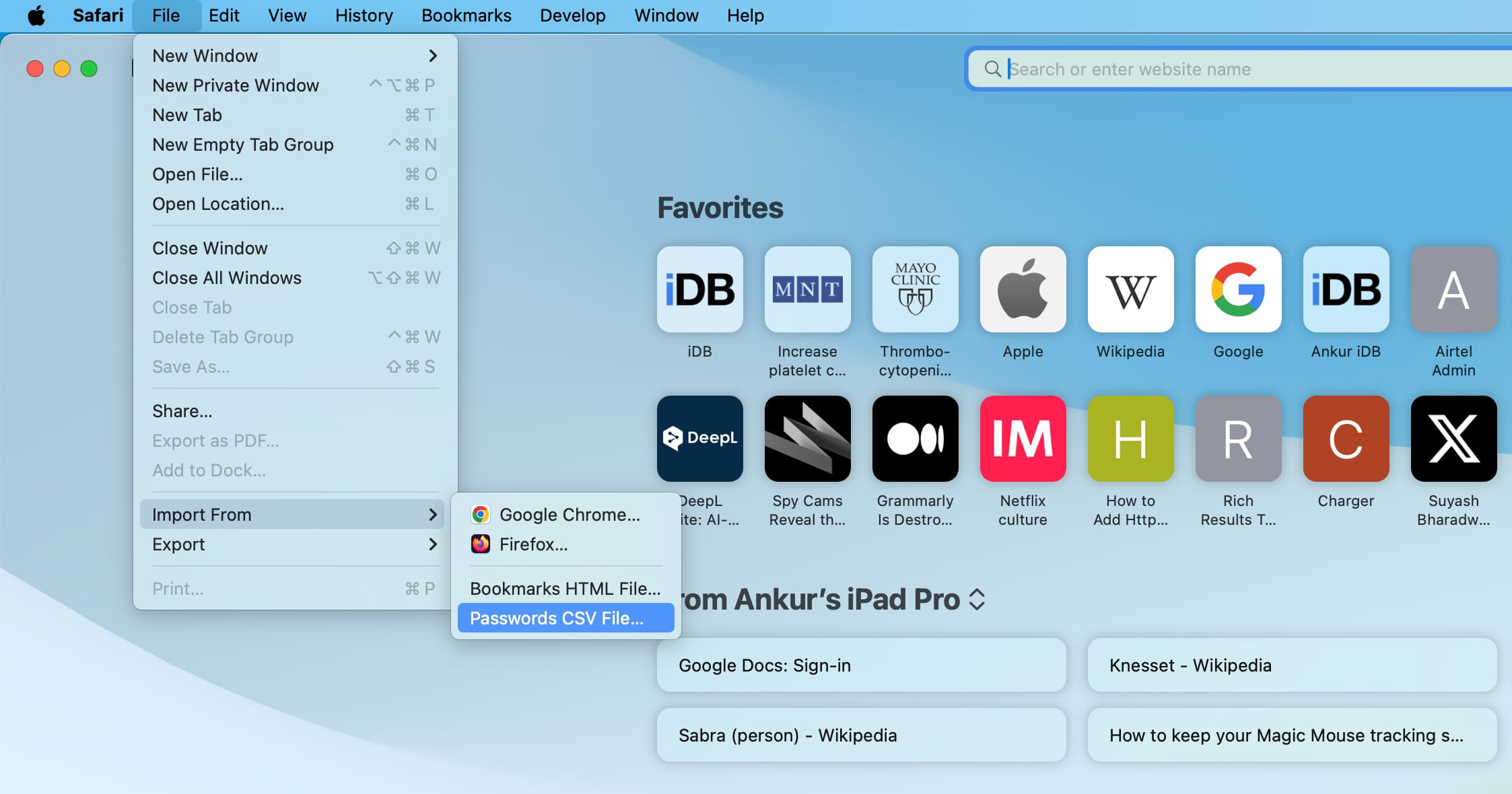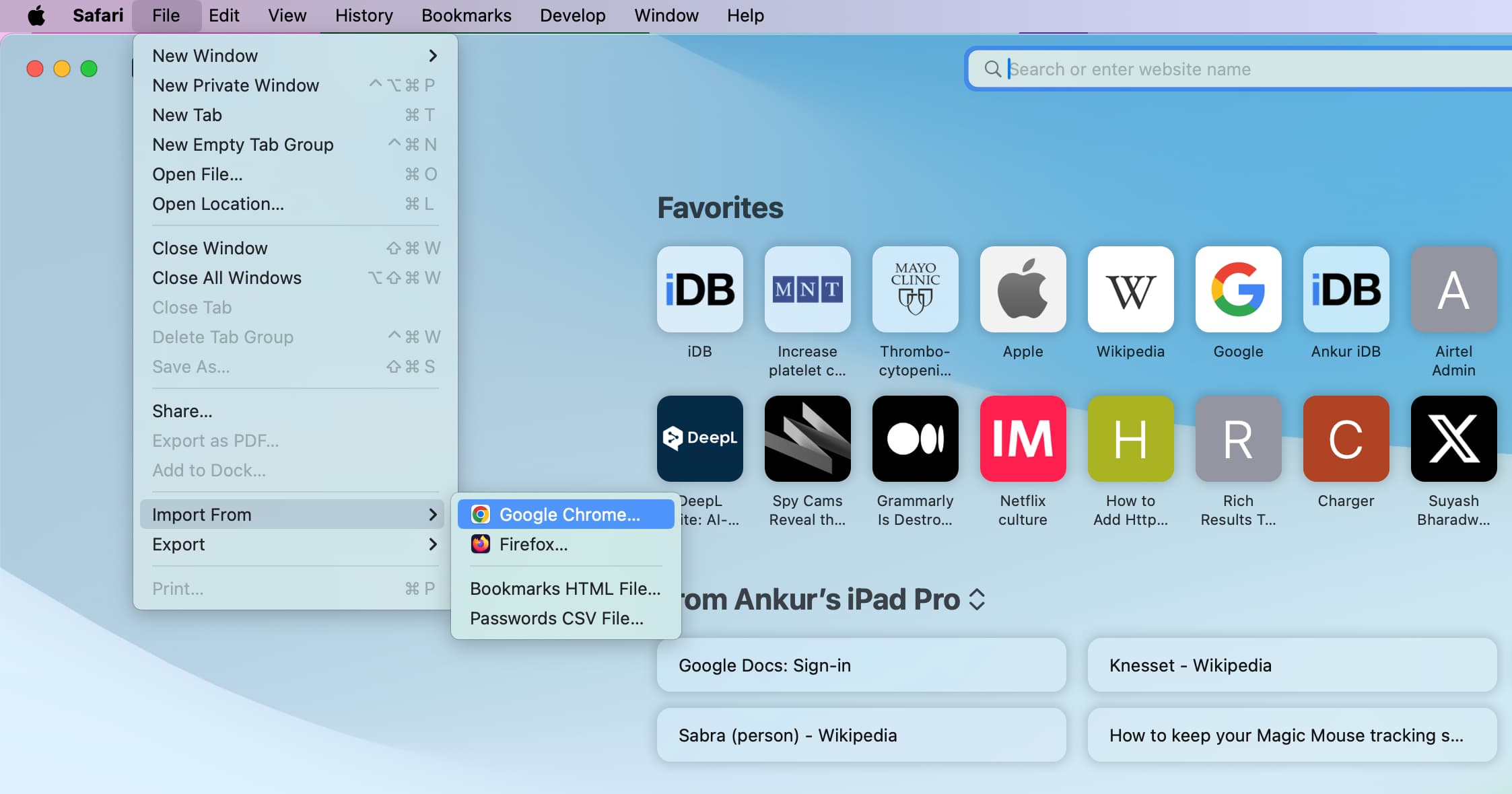Introduction
Safari, Apple's native web browser, is renowned for its seamless integration with the macOS and iOS ecosystems. It offers a user-friendly interface and a range of features designed to enhance the browsing experience. One such feature is the ability to store and manage passwords for various websites and online accounts. However, there may be instances where users need to export their saved passwords from Safari, such as when transitioning to a new device or switching to a different browser.
In this guide, we will explore the process of exporting passwords from Safari, providing a comprehensive walkthrough to assist users in seamlessly transferring their credentials to a different platform or securely storing them for backup purposes. Whether you are migrating to a new browser or simply wish to maintain a secure backup of your passwords, understanding how to export passwords from Safari is a valuable skill that can streamline the transition process and ensure the safety of your sensitive information.
By following the steps outlined in this guide, users can gain a deeper understanding of Safari's password management capabilities and leverage this knowledge to maintain control over their digital security. With a clear focus on simplicity and security, this guide aims to empower users with the necessary skills to export their passwords from Safari with confidence and ease. Let's embark on this journey to unlock the potential of Safari's password management features and harness the power of seamless data portability.
Step 1: Accessing Safari's Passwords
Accessing Safari's saved passwords is a straightforward process that provides users with a convenient way to view and manage their stored credentials. To begin, users can launch Safari on their macOS device and navigate to the "Safari" menu located in the top-left corner of the screen. Upon clicking the "Safari" menu, a dropdown list will appear, presenting various options for customizing the browser's settings and accessing its features.
Next, users should select the "Preferences" option from the dropdown menu, which will open a new window containing a range of settings and preferences for Safari. Within this window, users can navigate to the "Passwords" tab, which is situated alongside other tabs such as "General," "Tabs," "AutoFill," "Search," and "Extensions." By clicking on the "Passwords" tab, users will gain access to a comprehensive list of websites and online accounts for which Safari has stored passwords.
Upon accessing the "Passwords" tab, users may be prompted to authenticate their identity using their macOS account password or another method of verification. This additional layer of security ensures that only authorized users can view and manage the stored passwords, thereby safeguarding the sensitive information contained within the browser.
Once authenticated, users will be presented with a list of websites and corresponding usernames for which Safari has saved passwords. This list offers a convenient overview of the stored credentials, allowing users to easily identify and select the specific entries they wish to export. By clicking on a particular entry, users can view additional details such as the associated username and the option to reveal the saved password for that website.
In summary, accessing Safari's passwords involves navigating to the "Preferences" window within the Safari browser, selecting the "Passwords" tab, and authenticating the user's identity to gain access to the stored credentials. This intuitive process empowers users to conveniently manage their saved passwords and prepare for the subsequent steps involved in exporting this valuable information. With a clear understanding of how to access Safari's passwords, users can confidently proceed to the next phase of exporting their credentials for backup or migration purposes.
Step 2: Exporting Passwords
Exporting passwords from Safari is a pivotal step in ensuring the seamless transfer or backup of valuable credentials. Once users have accessed Safari's stored passwords, the next phase involves exporting this information to a secure and accessible format. This process enables users to retain control over their credentials and facilitates their utilization across different platforms or browsers. To initiate the export of passwords from Safari, users can follow the steps outlined below:
-
Selecting the Desired Password Entries: After accessing Safari's stored passwords through the "Preferences" window, users can proceed to select the specific entries they intend to export. This selection process allows users to tailor the exported data according to their preferences, ensuring that only relevant credentials are included in the export file.
-
Utilizing the Export Passwords Feature: Safari offers a built-in functionality that enables users to export their saved passwords with ease. To utilize this feature, users can navigate to the "Passwords" tab within the "Preferences" window and locate the "Export…" option. By clicking on this option, users can initiate the export process and proceed to the next step.
-
Choosing the Export File Format: Upon selecting the "Export…" option, users will be prompted to specify the file format in which they wish to export their passwords. Safari provides the flexibility to export passwords in either a plain text (.txt) file or a more secure and encrypted format using the Passwords Exporter tool. Users can choose the format that best aligns with their security preferences and intended use of the exported passwords.
-
Setting a Secure Export Password (Optional): In cases where users opt to export their passwords in an encrypted format, Safari allows them to set a secure export password to safeguard the integrity of the exported data. This additional layer of security ensures that the exported passwords remain protected and accessible only to authorized individuals.
-
Saving the Exported Passwords File: After specifying the export file format and, if applicable, setting a secure export password, users can proceed to save the exported passwords file to a location of their choice. Safari enables users to designate a preferred storage location for the export file, ensuring that it is easily retrievable and can be utilized as needed.
By following these steps, users can effectively export their passwords from Safari, thereby facilitating the secure transfer or backup of their valuable credentials. This process empowers users with the flexibility to manage their passwords in a manner that aligns with their specific security and usability requirements. With the exported passwords readily available in a secure and accessible format, users can confidently proceed to the final step of saving the exported passwords to a designated file for future use or migration to alternative platforms or browsers.
Step 3: Saving Passwords to a File
After successfully exporting passwords from Safari, the final step involves saving the exported passwords to a designated file, ensuring their accessibility and security for future use or migration to alternative platforms or browsers. This pivotal phase empowers users to retain control over their valuable credentials and facilitates their seamless integration into different digital environments. To accomplish this, users can follow the steps outlined below:
-
Designating a Storage Location: Upon completing the export process, users can specify the desired storage location for the exported passwords file. Safari allows users to choose a location that aligns with their organizational preferences and ensures convenient access to the exported credentials when needed. Whether it's a dedicated folder, a secure cloud storage service, or an external storage device, selecting an appropriate storage location is essential for safeguarding the exported passwords.
-
Naming the Exported File: When saving the exported passwords to a file, users can assign a descriptive and recognizable name to the file. This naming convention enhances the file's usability and facilitates easy identification of the contained credentials. By employing a clear and intuitive naming strategy, users can streamline the management of their exported passwords and minimize the risk of confusion or misplacement.
-
Implementing Additional Security Measures (Optional): In scenarios where users prioritize enhanced security for the exported passwords, Safari provides the option to apply additional security measures before saving the file. This may include encrypting the file with a secure password or utilizing encryption tools to fortify the protection of the exported credentials. By implementing these optional security measures, users can bolster the integrity of the exported passwords and mitigate potential risks associated with unauthorized access.
-
Verifying the Saved File: Before concluding the process, users can verify the saved file to ensure that the exported passwords are accurately preserved and readily accessible. This verification step serves as a proactive measure to confirm the successful saving of the exported passwords and provides users with the confidence that their valuable credentials are securely stored in the designated file.
By meticulously following these steps, users can effectively save the exported passwords from Safari to a designated file, thereby empowering themselves with a secure and accessible repository of their valuable credentials. This strategic approach not only facilitates the seamless integration of passwords into alternative platforms or browsers but also reinforces the users' ability to maintain control over their digital security. With the exported passwords securely saved to a designated file, users can confidently navigate the dynamic digital landscape while upholding the integrity and accessibility of their essential credentials.

























